Who is smarter - men or women? We understand on the basis of patent statistics
It is clear that statistics is a type of lie, but still the data of patent information on the ratio of the sex composition of inventors is surprising. What do you think is the ratio of men and women among patent holders? 50/50? Not!

')
Abroad
According to foreign patent offices, there are far fewer women among inventors than men. According to the data of the American Patent Office, only in 10.3% of patents at least one of the authors is a woman.
According to statistics from the European Patent Office, the data look even sadder: 8.8% for patents from America, the highest rates for Spain (12.3%) and France (10.2%), and the lowest for Austria (3.2%) and Germany (4.7%).
Data source: WHY DON'T WOMEN PATENT ?
If you look at the statistics of patents that turned out to be commercially applicable, the gap becomes even larger - only 5.5% of “female” patents.
What explains this bias?
According to Professor Toby Stuart (Haas School of Business at the University of California, Berkeley), men have more useful social connections to implement ideas.
The authors of the study “WHY DON'T WOMEN PATENT?”, Cited above, explain the gender gap in patenting by different ratios of men and women among specialists and graduate scholars, provide detailed statistical data. As a conclusion, they propose to increase the share of "female" patents, which, according to their calculations, will lead to an increase in US GDP by 2.7%.
There are also historical roots of the problem. A woman for a long time (and partly now) was in an unequal social position with a man, which was supported by legal norms. Previously, women were significantly reduced in rights in favor of men. They could not even file a patent on their own behalf, since their intellectual property was considered the property of the husband.
There is probably a difference at the level of physiology. In the book of American scientist V. Bowerman, the list of thousands of geniuses includes only 29 women (2.9%).
The creative abilities of women were not highly evaluated:
Arthur Schopenhauer: a woman can not be a creator ... Source
Friedrich Nietzsche: a woman cannot create ... Source
A woman can not be a genius in the opinion of Otto Weininger ... Source
Social prohibitions against women that do not allow them to become geniuses according to Simone de Beauvoir Source
The intelligence of women and men by M.I. Weller Source
The number of brilliant women was estimated by A.V. Shuvalov Source
62 more material on the topic: Creative personality - woman
Restoring historical justice let us recall the women inventors who contributed to the development of industry and made our lives more convenient.
Tabitha Babbitt
At the very end of the XVIII century, the world learned about a Protestant religious sect called "shakers". The main thing in the organization was the arrangement of life in it. Equality was observed between the sexes, and hard work was evenly distributed. In Massachusetts, there was also such a community, in which lived Tabith Babbitt. She worked as a weaver, but in 1810 she found a way to make the work of her brothers easier. A woman watched for a long time how men sawed logs with a two-handed saw, moving it one way or the other. Although the load on people and was evenly distributed, but the direct cut occurred only at the time of movement of the saw forward. When I moved back, it had no effect on the log. Tabitha quickly realized that people were wasting their energy. She came up with a prototype circular saw. Later it was successfully used in the sawmill industry. Babbitt proposed creating a circular saw blade. Now every movement of the instrument along the tree gained meaning. But the commandments of the community were quite strict, they prevented Babbitt from obtaining his legal patent.
Stephanie Kwolek
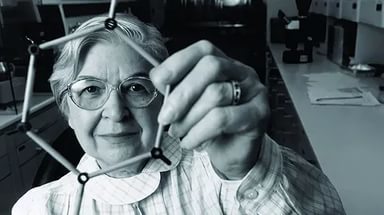
Stephanie Kwolek remained in the history of mankind as the inventor of Kevlar.
Kevlar is a special organic fiber that has extraordinary strength, good flexibility and very light weight. For example, Kevlar is five times stronger than steel. And most of all, Kevlar has found its use in military uniforms - in particular, in Kevlar body armor. And her invention saved many lives.
Most surprisingly, Kwolek did not work in the military industry at all. She was just trying to find ... a substitute for rubber car tires (it was just after the outbreak of the oil crisis).
Catherine Blodgett
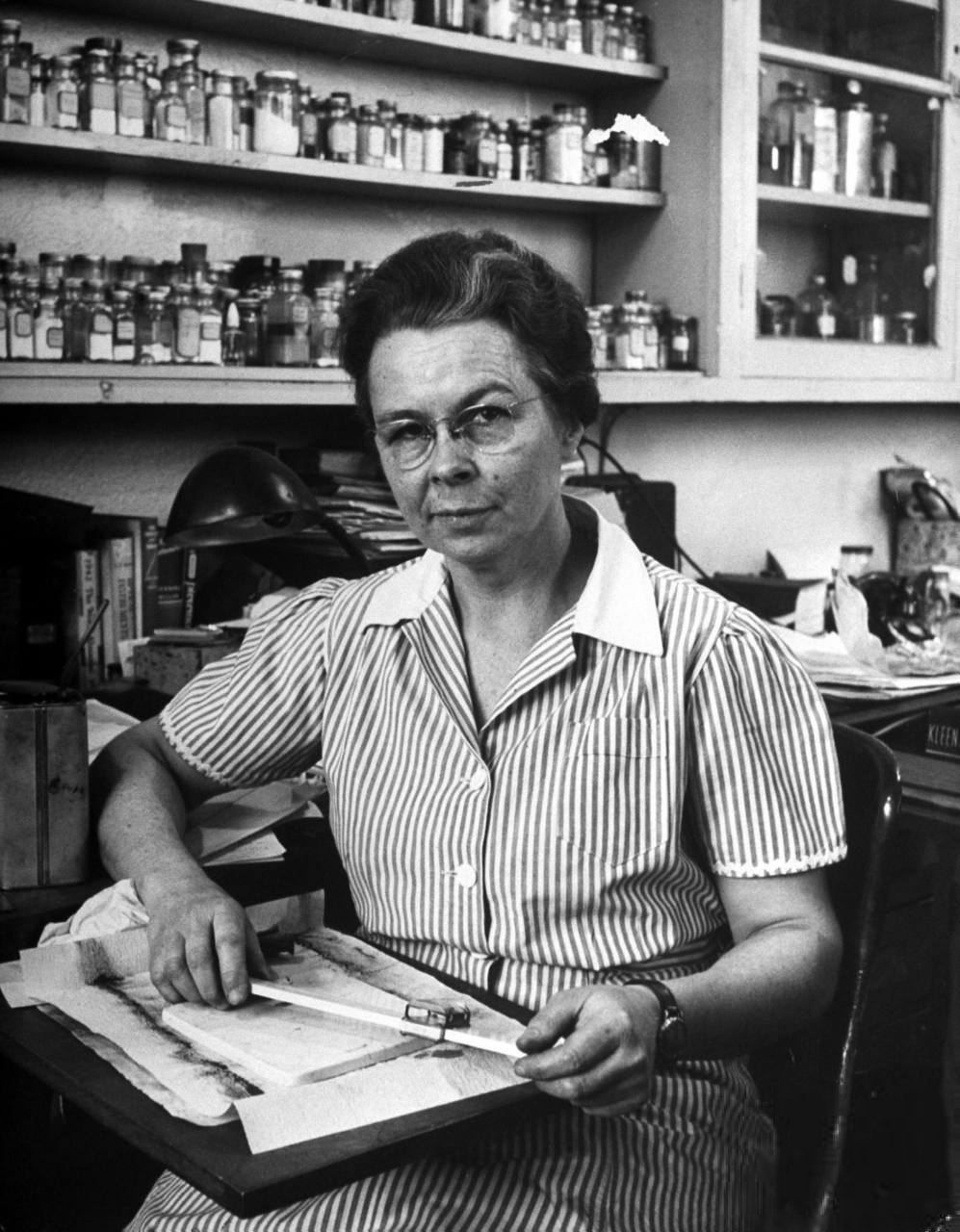
The first woman scientist at General Electric, Catherine Blodgett, in 1935, discovered a way to transfer a thin monomolecular film to glass and metal. The result is glass that does not gleam or distort the image. It revolutionized the production of cameras, microscopes, glasses and more.
Josephine Koshren
The first dishwasher, patented in 1886, included a boiler for heating water, a unit for supplying it under pressure, a wheel and a grill like those that are still used for drying dishes. Only 40 years later, the Cochrane device was recognized as a necessary thing in the household. The inventor, Josephine Koshren, never used it herself, but greatly simplified the life of her servants.
Nicole Barbier Clicquot
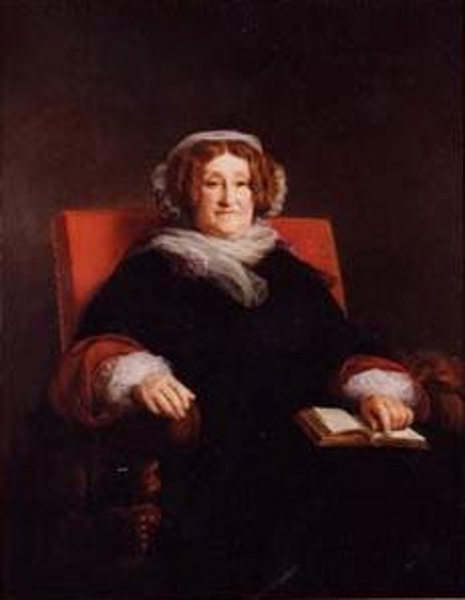
In 1808, she developed the technology of “Remauge”, thanks to which the champagne for three months gets rid of sediment and becomes crystal clear, had real success, significantly improving the quality of the drink.
Mary anderson
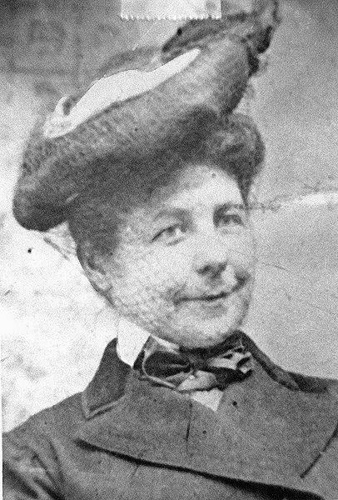
The first car wipers were invented by Mary Anderson in 1903. She felt sorry for the driver, who during the blizzard had to constantly stop the car and rake the snow from the windshield.
I want more
And more , and more
The most significant invention of the 20th century, which had the greatest impact on people's lives, was the diapers (!) On the woman's account.
Men simply do not think of such an invention (as well as of a bra and means of feminine hygiene), since this is not their headache at all.
How about in Russia?
Rospatent is not engaged in stirring up gender-related hatred and does not provide statistics on the distribution of patents for men and women. On our own, we considered the domestic gender gap on the example of the last 50 issued Russian patents for inventions. It turned out to be about the same as in foreign patent offices - 12%. Moreover, a significant contribution to our sample in the share of women's patents made inventor from France. Interestingly, there is not a single "purely female patent."
In the Atlas of the History of Culture of Russia (1993), covering the period from the end of the 17th to the beginning of the 20th century, 2,560 prominent figures of almost all branches of science and culture are mentioned; 7.7% of the total number of personalities - women. In the Great Soviet Encyclopedia of voluminous biographies (more than 1,500 characters), there were 2107, of which 66 were women, which amounted to 3.1%.
Moreover, it will be appropriate to recall our outstanding women inventors.
Zinaida Ermolyeva
Antibiotic inventor

Microbiologist, Honored Scientist of the RSFSR, Academician, State Prize laureate. She was born on October 24, 1898 in the Frolov farm, now Archeda station, in the family of a railwayman. In childhood, she was cheerful-minded, responsive and kind, then grew up and became the first dancer. She loved Tchaikovsky's “Sentimental Waltz” and showed great interest in wildlife.
An inquisitive mind led Yermoliev to the medical department of Rostov University, where she was seriously interested in microbiology: she was attracted to the unknown, which was then much in this science. Her first work, “On the Biology of Vibrio Cholerae on the Epidemic Materials of 1922 in Rostov-on-Don,” later turned into a large monograph, which for a long time determined its scientific fate.
The path to science was thorny. Yermolyeva became interested in cholera-like vibrios and decided to conduct an experiment on herself: she took four billion microbial bodies of such a vibrio on an empty stomach. A classic picture of cholera disease developed, but the young body passed this test. Soon a large monograph "Cholera" was published from the pen of 3. V. Ermolyeva.
In 1942, when Stalingrad became the frontline point for evacuees, Professor Yermolyev was sent here to prevent cholera from falling into the population. The emergency commission was headed by the Deputy Commissar of Health. All measures were taken: the production of cholera bacteriophage was established in Stalingrad itself. 50 thousand people received this salvific vaccine every day - it was truly a feat of Soviet medics, a feat of medicine. Six months spent Ermoliev in besieged Stalingrad.
Seeing the new and most important is the main feature of the scientist. The most necessary during the war years was to help the wounded who died from sepsis. Tense, at night, work in the laboratory - and the Ermolyeva team receives the first domestic penicillin. But Yermolyeva not only received it, but also established its industrial production, which saved thousands of lives of our soldiers from certain death.
The war ended, and Ermoliev among those who build. Among the builders of the Volga-Don Canal, she conducted preventive work against epidemics. It is her leadership in the study of interferon as an antiviral agent. Zinaida Vissarionovna was well known in Stalingrad, Astrakhan, she performed in Paris, Prague, Geneva, where she represented Soviet science, was an active public activist.
Two orders of Lenin, including for work in Stalingrad, for her scientific feat, the Order of the Red Banner of Labor, the Order of the Badge of Honor, medals. Inspired by Yermolyeva, writer A.V. wrote his “Open Book”. Kaverin.
Anna Mezhlumova
Soviet chemist

During the experiments, Anna Mezhlumova for the first time in history managed to get high-octane gasoline.
It's no secret that the source of power for an automobile engine is liquid or gas fuel, most often gasoline. The most important indicator of its quality is the tendency to explode, and this tendency is determined by the so-called octane number. And the higher it is, the less likely that gasoline will explode.
Therefore, at present, almost all engines of modern machines operate on high-octane gasoline (the famous 92nd and 95th gasoline), which contributes to the development of speed, rapid acceleration and lower engine wear.
At the same time, unfortunately, the name of Anna Mezhlumova is practically unknown to anyone. In one of the last surviving interviews, in 2006, Anna Ilinichna told that she lives with her son in a room in a communal flat and is proud that in her 92 years she still remembers all chemical formulas. More relevant information was not found about it.
Fatima Aslanbekovna Butaeva
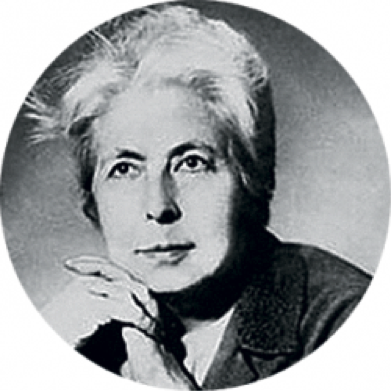
Fatima Aslanbekovna Butaeva - Soviet physicist and inventor, winner of the Stalin Prize.
The future researcher was born in Alagir, her father Aslanbek Butaev is a prominent lawyer and journalist, friend of Kosta Khetagurov, founder and editor of the first newspaper in the Ossetian language “Iron of the newspapers”.
In 1925, Fatima Butaeva entered the Gorsky Pedagogical Institute, then continued her studies at the Physics and Mathematics Department of the Second Moscow State University.
In 1934, its research activities began at the All-Union Electrotechnical Institute in the laboratory of sources of light under the guidance of prominent scientist V. A. Fabrikant.
Fatima Butaeva has gone from an engineer to the head of the laboratory.
For a number of years, she and a group of scientists conducted studies on the luminescence of various phosphors in the optical spectral region. The practical result of this work is the development and launch of the release of the first USSR fluorescent lamps, or fluorescent lamps.
In 1951, Fatima Butaeva participates in the invention of the first laser facility, the “pulsed charge apparatus for amplifying light.” Soviet scientists have developed a method of amplifying electromagnetic radiation, which is now used in all lasers.
This work was largely ahead of its time and gained recognition only years later, in 1964, when a group of scientists, including Fatima Butaeva, was awarded a diploma of scientific discovery.
Natalia Vladimirovna Malysheva
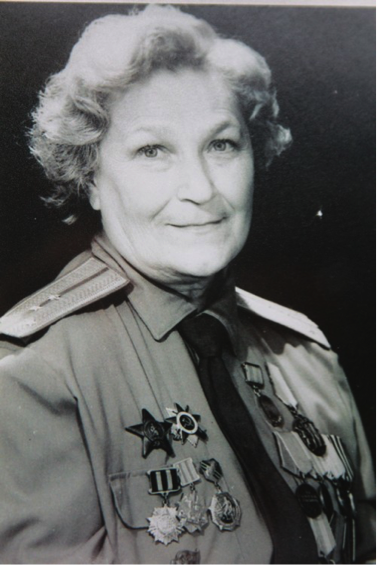
Natalya Vladimirovna Malysheva (December 12, 1921, Crimea - February 4, 2012) - Soviet designer of rocket engines, later - nun Adriana. N. V. Malysheva was born in the Crimea, in the family of a local doctor. Since childhood, she was engaged in swimming and gymnastics, skied, shot. She graduated from nursing courses, passed the standards of the TRP. Malysheva entered the Moscow Aviation Institute.
In 1941 I went to the front. She served in the divisional intelligence on the Volokolamsk direction. In June 1942, she was sent to a 3-month course at the scout school in Gireyevo. After them, she served in the army intelligence service of the 16th Army (2 formations), commanded by Rokossovsky. The war ended lieutenant.
After the Victory until 1949 she served in Poland, in Upper Silesia. In 1949, they transferred to Potsdam, rose to the rank of captain.
After leaving the army, she returned to the MAI right away to the third year, graduated from it and began working on the distribution as a designer of rocket engines at NII-88 at Podlipki (now Korolev). Natalia Vladimirovna has worked in this field for 35 years.
Design engineer Malysheva participated in the creation of engines for maneuvering and braking in orbit of the first ballistic missiles and spacecraft, including for the Gagarin "Vostok". She was the only woman in the state commission for testing missile systems. N.V. Malysheva participated in the development of engines for the C-75 Peter Grushin anti-aircraft missile system. For this engine, she was awarded the Order.
In retirement, she helped to equip the courtyard of the Holy Dormition Pyukhtitsky Convent in Moscow and remained here to serve as a simple nun, taking the veil under the name of Adrian. Mother Adriana became the winner of the international award "For Faith and Fidelity", established by the Foundation of St. Andrew.
Fundamental questions of the female creative path
A very interesting report on the theme “ Great women is a creative path ” was made by A.A. Ryzhachkov.
On the basis of 150 studied biographies, he deeply plunged into the problem and in particular tries to answer a number of questions:
If a woman begins to engage in creativity, then men will have to learn how to serve themselves?
Were there any creative girls / women who were not influenced by men?
Will the number of creative women increase in the future?
What is the difference between the results of an actress and a scientist / researcher?
To what age can a woman start a creative activity?

')
Abroad
According to foreign patent offices, there are far fewer women among inventors than men. According to the data of the American Patent Office, only in 10.3% of patents at least one of the authors is a woman.
According to statistics from the European Patent Office, the data look even sadder: 8.8% for patents from America, the highest rates for Spain (12.3%) and France (10.2%), and the lowest for Austria (3.2%) and Germany (4.7%).
Data source: WHY DON'T WOMEN PATENT ?
If you look at the statistics of patents that turned out to be commercially applicable, the gap becomes even larger - only 5.5% of “female” patents.
What explains this bias?
According to Professor Toby Stuart (Haas School of Business at the University of California, Berkeley), men have more useful social connections to implement ideas.
The authors of the study “WHY DON'T WOMEN PATENT?”, Cited above, explain the gender gap in patenting by different ratios of men and women among specialists and graduate scholars, provide detailed statistical data. As a conclusion, they propose to increase the share of "female" patents, which, according to their calculations, will lead to an increase in US GDP by 2.7%.
There are also historical roots of the problem. A woman for a long time (and partly now) was in an unequal social position with a man, which was supported by legal norms. Previously, women were significantly reduced in rights in favor of men. They could not even file a patent on their own behalf, since their intellectual property was considered the property of the husband.
There is probably a difference at the level of physiology. In the book of American scientist V. Bowerman, the list of thousands of geniuses includes only 29 women (2.9%).
The creative abilities of women were not highly evaluated:
Arthur Schopenhauer: a woman can not be a creator ... Source
Friedrich Nietzsche: a woman cannot create ... Source
A woman can not be a genius in the opinion of Otto Weininger ... Source
Social prohibitions against women that do not allow them to become geniuses according to Simone de Beauvoir Source
The intelligence of women and men by M.I. Weller Source
The number of brilliant women was estimated by A.V. Shuvalov Source
62 more material on the topic: Creative personality - woman
Restoring historical justice let us recall the women inventors who contributed to the development of industry and made our lives more convenient.
Tabitha Babbitt
At the very end of the XVIII century, the world learned about a Protestant religious sect called "shakers". The main thing in the organization was the arrangement of life in it. Equality was observed between the sexes, and hard work was evenly distributed. In Massachusetts, there was also such a community, in which lived Tabith Babbitt. She worked as a weaver, but in 1810 she found a way to make the work of her brothers easier. A woman watched for a long time how men sawed logs with a two-handed saw, moving it one way or the other. Although the load on people and was evenly distributed, but the direct cut occurred only at the time of movement of the saw forward. When I moved back, it had no effect on the log. Tabitha quickly realized that people were wasting their energy. She came up with a prototype circular saw. Later it was successfully used in the sawmill industry. Babbitt proposed creating a circular saw blade. Now every movement of the instrument along the tree gained meaning. But the commandments of the community were quite strict, they prevented Babbitt from obtaining his legal patent.
Stephanie Kwolek

Stephanie Kwolek remained in the history of mankind as the inventor of Kevlar.
Kevlar is a special organic fiber that has extraordinary strength, good flexibility and very light weight. For example, Kevlar is five times stronger than steel. And most of all, Kevlar has found its use in military uniforms - in particular, in Kevlar body armor. And her invention saved many lives.
Most surprisingly, Kwolek did not work in the military industry at all. She was just trying to find ... a substitute for rubber car tires (it was just after the outbreak of the oil crisis).
Catherine Blodgett

The first woman scientist at General Electric, Catherine Blodgett, in 1935, discovered a way to transfer a thin monomolecular film to glass and metal. The result is glass that does not gleam or distort the image. It revolutionized the production of cameras, microscopes, glasses and more.
Josephine Koshren
The first dishwasher, patented in 1886, included a boiler for heating water, a unit for supplying it under pressure, a wheel and a grill like those that are still used for drying dishes. Only 40 years later, the Cochrane device was recognized as a necessary thing in the household. The inventor, Josephine Koshren, never used it herself, but greatly simplified the life of her servants.
Nicole Barbier Clicquot

In 1808, she developed the technology of “Remauge”, thanks to which the champagne for three months gets rid of sediment and becomes crystal clear, had real success, significantly improving the quality of the drink.
Mary anderson

The first car wipers were invented by Mary Anderson in 1903. She felt sorry for the driver, who during the blizzard had to constantly stop the car and rake the snow from the windshield.
I want more
And more , and more
The most significant invention of the 20th century, which had the greatest impact on people's lives, was the diapers (!) On the woman's account.
Men simply do not think of such an invention (as well as of a bra and means of feminine hygiene), since this is not their headache at all.
How about in Russia?
Rospatent is not engaged in stirring up gender-related hatred and does not provide statistics on the distribution of patents for men and women. On our own, we considered the domestic gender gap on the example of the last 50 issued Russian patents for inventions. It turned out to be about the same as in foreign patent offices - 12%. Moreover, a significant contribution to our sample in the share of women's patents made inventor from France. Interestingly, there is not a single "purely female patent."
In the Atlas of the History of Culture of Russia (1993), covering the period from the end of the 17th to the beginning of the 20th century, 2,560 prominent figures of almost all branches of science and culture are mentioned; 7.7% of the total number of personalities - women. In the Great Soviet Encyclopedia of voluminous biographies (more than 1,500 characters), there were 2107, of which 66 were women, which amounted to 3.1%.
Moreover, it will be appropriate to recall our outstanding women inventors.
Zinaida Ermolyeva
Antibiotic inventor

Microbiologist, Honored Scientist of the RSFSR, Academician, State Prize laureate. She was born on October 24, 1898 in the Frolov farm, now Archeda station, in the family of a railwayman. In childhood, she was cheerful-minded, responsive and kind, then grew up and became the first dancer. She loved Tchaikovsky's “Sentimental Waltz” and showed great interest in wildlife.
An inquisitive mind led Yermoliev to the medical department of Rostov University, where she was seriously interested in microbiology: she was attracted to the unknown, which was then much in this science. Her first work, “On the Biology of Vibrio Cholerae on the Epidemic Materials of 1922 in Rostov-on-Don,” later turned into a large monograph, which for a long time determined its scientific fate.
The path to science was thorny. Yermolyeva became interested in cholera-like vibrios and decided to conduct an experiment on herself: she took four billion microbial bodies of such a vibrio on an empty stomach. A classic picture of cholera disease developed, but the young body passed this test. Soon a large monograph "Cholera" was published from the pen of 3. V. Ermolyeva.
In 1942, when Stalingrad became the frontline point for evacuees, Professor Yermolyev was sent here to prevent cholera from falling into the population. The emergency commission was headed by the Deputy Commissar of Health. All measures were taken: the production of cholera bacteriophage was established in Stalingrad itself. 50 thousand people received this salvific vaccine every day - it was truly a feat of Soviet medics, a feat of medicine. Six months spent Ermoliev in besieged Stalingrad.
Seeing the new and most important is the main feature of the scientist. The most necessary during the war years was to help the wounded who died from sepsis. Tense, at night, work in the laboratory - and the Ermolyeva team receives the first domestic penicillin. But Yermolyeva not only received it, but also established its industrial production, which saved thousands of lives of our soldiers from certain death.
The war ended, and Ermoliev among those who build. Among the builders of the Volga-Don Canal, she conducted preventive work against epidemics. It is her leadership in the study of interferon as an antiviral agent. Zinaida Vissarionovna was well known in Stalingrad, Astrakhan, she performed in Paris, Prague, Geneva, where she represented Soviet science, was an active public activist.
Two orders of Lenin, including for work in Stalingrad, for her scientific feat, the Order of the Red Banner of Labor, the Order of the Badge of Honor, medals. Inspired by Yermolyeva, writer A.V. wrote his “Open Book”. Kaverin.
Anna Mezhlumova
Soviet chemist

During the experiments, Anna Mezhlumova for the first time in history managed to get high-octane gasoline.
It's no secret that the source of power for an automobile engine is liquid or gas fuel, most often gasoline. The most important indicator of its quality is the tendency to explode, and this tendency is determined by the so-called octane number. And the higher it is, the less likely that gasoline will explode.
Therefore, at present, almost all engines of modern machines operate on high-octane gasoline (the famous 92nd and 95th gasoline), which contributes to the development of speed, rapid acceleration and lower engine wear.
At the same time, unfortunately, the name of Anna Mezhlumova is practically unknown to anyone. In one of the last surviving interviews, in 2006, Anna Ilinichna told that she lives with her son in a room in a communal flat and is proud that in her 92 years she still remembers all chemical formulas. More relevant information was not found about it.
Fatima Aslanbekovna Butaeva

Fatima Aslanbekovna Butaeva - Soviet physicist and inventor, winner of the Stalin Prize.
The future researcher was born in Alagir, her father Aslanbek Butaev is a prominent lawyer and journalist, friend of Kosta Khetagurov, founder and editor of the first newspaper in the Ossetian language “Iron of the newspapers”.
In 1925, Fatima Butaeva entered the Gorsky Pedagogical Institute, then continued her studies at the Physics and Mathematics Department of the Second Moscow State University.
In 1934, its research activities began at the All-Union Electrotechnical Institute in the laboratory of sources of light under the guidance of prominent scientist V. A. Fabrikant.
Fatima Butaeva has gone from an engineer to the head of the laboratory.
For a number of years, she and a group of scientists conducted studies on the luminescence of various phosphors in the optical spectral region. The practical result of this work is the development and launch of the release of the first USSR fluorescent lamps, or fluorescent lamps.
In 1951, Fatima Butaeva participates in the invention of the first laser facility, the “pulsed charge apparatus for amplifying light.” Soviet scientists have developed a method of amplifying electromagnetic radiation, which is now used in all lasers.
This work was largely ahead of its time and gained recognition only years later, in 1964, when a group of scientists, including Fatima Butaeva, was awarded a diploma of scientific discovery.
Natalia Vladimirovna Malysheva

Natalya Vladimirovna Malysheva (December 12, 1921, Crimea - February 4, 2012) - Soviet designer of rocket engines, later - nun Adriana. N. V. Malysheva was born in the Crimea, in the family of a local doctor. Since childhood, she was engaged in swimming and gymnastics, skied, shot. She graduated from nursing courses, passed the standards of the TRP. Malysheva entered the Moscow Aviation Institute.
In 1941 I went to the front. She served in the divisional intelligence on the Volokolamsk direction. In June 1942, she was sent to a 3-month course at the scout school in Gireyevo. After them, she served in the army intelligence service of the 16th Army (2 formations), commanded by Rokossovsky. The war ended lieutenant.
After the Victory until 1949 she served in Poland, in Upper Silesia. In 1949, they transferred to Potsdam, rose to the rank of captain.
After leaving the army, she returned to the MAI right away to the third year, graduated from it and began working on the distribution as a designer of rocket engines at NII-88 at Podlipki (now Korolev). Natalia Vladimirovna has worked in this field for 35 years.
Design engineer Malysheva participated in the creation of engines for maneuvering and braking in orbit of the first ballistic missiles and spacecraft, including for the Gagarin "Vostok". She was the only woman in the state commission for testing missile systems. N.V. Malysheva participated in the development of engines for the C-75 Peter Grushin anti-aircraft missile system. For this engine, she was awarded the Order.
In retirement, she helped to equip the courtyard of the Holy Dormition Pyukhtitsky Convent in Moscow and remained here to serve as a simple nun, taking the veil under the name of Adrian. Mother Adriana became the winner of the international award "For Faith and Fidelity", established by the Foundation of St. Andrew.
Fundamental questions of the female creative path
A very interesting report on the theme “ Great women is a creative path ” was made by A.A. Ryzhachkov.
On the basis of 150 studied biographies, he deeply plunged into the problem and in particular tries to answer a number of questions:
If a woman begins to engage in creativity, then men will have to learn how to serve themselves?
Were there any creative girls / women who were not influenced by men?
Will the number of creative women increase in the future?
What is the difference between the results of an actress and a scientist / researcher?
To what age can a woman start a creative activity?
Source: https://habr.com/ru/post/300030/
All Articles